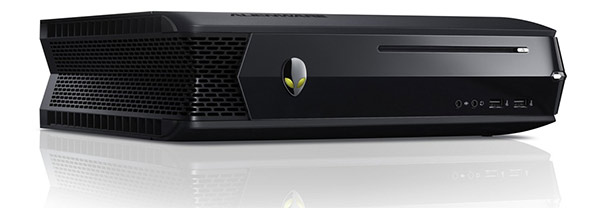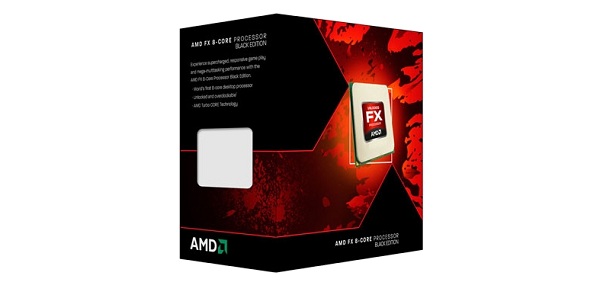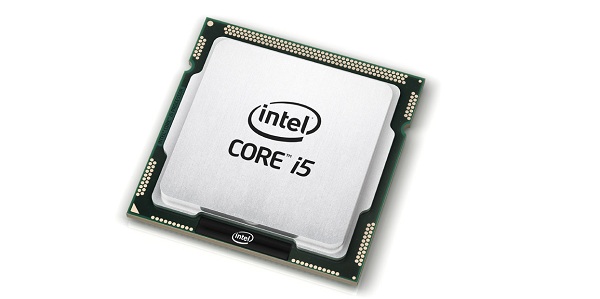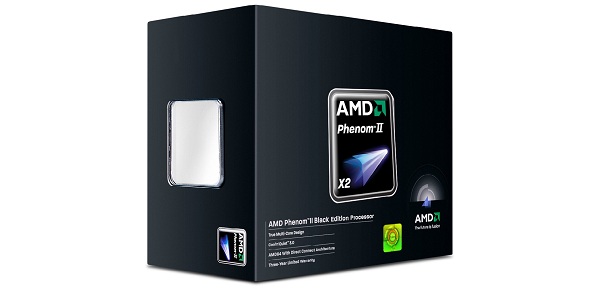Hard Choices: CPUs
What hardware to buy? This hardware, that's what
We asked long-time Friend of RPS and tech know-it-all Jeremy Laird to write us a series of columns that would make hardware-buying the simplest of matters for even the most technophobic of our readers. A mere three months later, he got around to starting. So, here is his breakdown of what's going on in the world of processors right now, ultimately boiling down to the only three CPUs you need to consider buying if you're upgrading or building a new PC. Take it away, Lord Laird...
Greetings hallowed RPSers. I'm Jeremy. I've been a PC hardware hack for the best part of a decade. And I'm the go-to guy the shameless RPS crew hit up when they're on the scrounge for a new CPU or simply can't sort their SSD controllers from their SATA ports. That's about as friendly as it's going to get. It's my job over the next few months to knock the sorry RPS collective into shape when it comes to PC hardware with a gaming slant.
What to buy and why. How much to pay. Maybe even where to buy it from. How you've survived this long without even rudimentary hardware coverage is anyone's guess. But never mind, because the currently parlous state of the PC component market makes this a great time to start. And start I will with CPUs.
Now, the software side of PC gaming is actually in rude health. For proof, look no further than the latest Steam stats and the alleged 40 million lambs to Valve's cloud-based slaughtering machine Hell, even PC games piracy downticked from catastrophic to merely debilitating in 2011.
But the PC as an overall platform is looking a lot less clever. In fact, it's going through an identity crisis. Until recently, everyone knew what a PC was. It had a processor compatible with the x86 instruction set. It ran a Windows operating system. Let's leave Linux out of this: we're talking gaming systems here.
Today, the PC is being attacked from all sides. Consoles set the tone when it comes to hardware requirements for most games. Meanwhile, a swarm of ARM-powered mobile devices is facing off against the PC as we have traditionally known it. The upshot is that improving gaming performance on the PC stopped being the primary concern a long time ago for guys working the coalface at previously PC-centric companies like Intel, AMD and NVIDIA. They're now embroiled in an undignified scrabble to get their silicon wares into smartphones and tablets.
That's why, for instance, Intel's Atom processors exist, why AMD recently announced it didn’t think competing with Intel mattered much any longer and why NVIDIA has looked so unbearably smug since it finally managed to get its Tegra chip inside a tablet or two. Then consider Microsoft's avowed intention to bring out an ARM-compatible version of Windows 8 and it's not at all clear what being a PC will mean in future.
Admittedly, it's going to take at least another five years for all this to play out fully. Today's PC still looks much as it always has. But when it comes to CPUs, roll up your sleeves and you can already feel the first drops of the gathering storm.
The most immediate issue is performance stagnation and the best recent example is Intel's new uber chip, the Core i7 3960X. It was a long time coming - nearly two full years – and barely moved the game on for performance. That's not because Intel has lost its touch. Quite the opposite. Intel intentionally hobbled the 3960X's performance by turning two cores off and not bothering to max out the clockspeeds. Frankly, Intel no longer cares about pushing PC performance on for its own sake. It just does enough to keep ahead of the competition. Utterly cynical, but you'd do the same thing in Intel's shoes.
As for that competition, the great hope was that AMD's all-new Bulldozer CPUs (sold as AMD 'FX' branded processors) would force Intel to stop sand bagging. Unfortunately, Bulldozer turned out to be completely awful as a high performance desktop processor. The per-core performance of the fastest eight-core versions of Bulldozer (actually, it doesn't have eight real cores, but that's a story for another day) is horrendous. Just as bad, Bulldozer often isn't even that much faster than AMD's old six-core Phenoms in highly threaded software. But then AMD's focus for the Bulldozer architecture was always more server PCs than gaming rigs.
So, the latest high end CPUs from Intel and AMD essentially suck. The only good news is that you probably didn't need one, anyway. As it happens, I did an interesting experiment recently comparing the subjective gaming performance of two rigs, one built using bargain basement kit the other money-no-object. The core components cost ratio was a factor of 10x - £300 vs £3,000.
I fired up them up side by side and asked a few storied gamers of my acquaintance to compare the likes of Skyrim and one or two other seriously hardware intensive titles. Nobody could correctly identify which system was running an £850 Intel Core i7 3960X and which was making do with £100's worth of AMD Phenom II X4.
That's not to say that the 3960X isn't a quicker CPU. But other factors at play conspire against it having any impact on the actual gaming experience. The stagnating influence of console hardware renders super-fast CPUs somewhat futile for PC gaming, for instance. Likewise, few if any PC games can generate lots of evenly balanced software threads. So, six cores' worth of HyperThreaded Intel grunt is largely wasted. I knew all that going in, but even I didn't think the end result would be so completely homogeneous from a subjective gameplay perspective.
Anywho, with all that in mind I'm here to tell you there are only three currently available CPUs gamers need to worry about. On the Intel side, it's the Core i5 2500K. If you can afford the roughly £160 asking price along with the slightly premium-priced LGA1155 socket motherboards it requires, then stop right here, read no further and don't even sniff at anything from AMD. It's the only CPU you need.
If you really must know why, it's because the 2500K sports four cores based on precisely the same architecture as the £850 Core i7 3960X and running at a similar 3.3GHz base clockspeed. And four cores is all you need for gaming, now and for the foreseeable future. Critically, the Core i5 series doesn't have HyperThreading. For gaming, that's actually a good thing since today's software can't tell the difference between a real core and a virtual core conjured up by HyperThreading. The danger here is that instead of running two intensive threads on separate cores, you end up running both on a single core. And that will kybosh your frame rates.
It's also worth noting the 'K' suffix in 2500K denotes an unlocked multiplier. In simple terms, this makes for childishly easy overclocking up to at least 4.5GHz. I absolutely, positively guarantee a 2500K running at over 4GHz will be good enough to batter any game into submission for at least the next two years. If the next generation of consoles are as conservative on the CPU side as I'm expecting, you can add as many as five more years onto that. The 2500K really is that good.
Of course, with any new CPU comes the likely requirement of a new motherboard. The Core i5 jives with the LGA1155 socket. Unusually for an Intel platform, it looks like sticking around for a bit so you've an outside chance of an upgrade down the road. As for which motherboard model to go for, so much of the modern CPU is now on-die, the choice is now much less critical. So, your main decision points involve features. Ensure your board has USB 3.0 and SATA 6Gbps support or you'll hate yourself later. Do not concern yourself with SLI or Crossfire multi-GPU support (tune in next time to find out why).
Brand wise, go for Asus if you want quality and decent support or lesser Asrock for better value and interesting feature sets. The chipset choice, meanwhile, essentially boils down to H67 and Z68. The former is tolerable, but the latter is much more flexible in terms of overclocking and access to the Core i5's integrated video engine (irrelevant for gaming, handy for hardware video encoding).
If your budget genuinely doesn't quite stretch to the Core i5 and the necessary accoutrements, you have a couple of options. Anything cheaper than the Core i5 from Intel is going to be dual-core. While games haven't truly entered the multi-threaded era, just two cores really is pushing your luck in terms of future proofing. Instead, AMD's four and six-core Phenom IIs are where it's at, offering a decent combination of cores and single-threaded or per-core performance. Do not under any circumstances be tempted by one of the new AMD FX processors. Smooth gaming demands strong per-core performance and that's the FX's weakest point.
Price wise, your choice is a Phenom II X4 quad-core chip like the 960T for around £100 or the X6 1055T six-core model for £120. I only include the six-core option as it's just £20 extra and the extra cores might come in handy if you happen to do a bit of video encoding or something similarly thread-intensive on the side. If you only care about gaming, don't bother.
The motherboard question applies pretty similarly to AMD platforms. You still want to ensure USB 3.0 and SATA 6Gbps is on board and ignore multi-GPU support. Regarding chipsets, it's all AMD now that NVIDIA has pretty much pulled out of the game. The AMD 7, 8 and 9 Series all shared essentially the same silicon. So, again, buy based on features. Just be sure to go with the AM3+ socket (AMD chips are typically backwards compatible with multiple older sockets) to give yourself the best possible chance of a drop-in CPU upgrade should you fancy it.
Overall, then, factor in generally cheaper AMD motherboard prices and a chip-and-mobo combo based on AMD will be around £100 less than the Intel alternative. The only problem is how long it will keep delivering the goods. Right now, it's quick enough to be indistinguishable from Intel's clobber, save for the most extreme gaming conditions. The specifications of the next generation of consoles will probably be the casting vote that determines of how long that remains true.
So there you have it. From the scores of CPUs Intel and AMD offer, just three to choose from. The rest are bunkum. Next time around, I'll be whittling the ridiculous and largely irrelevant array of current graphics cards down to a manageable few. If you're sitting there thinking a really fast graphics card makes all the difference, I'll leave you with a couple of numbers to ponder. 1,920 and 1,080. Until next time, grasshoppers.
Update:
Inevitably enough, the Ivy Bridge question has popped up. Ivy Bridge is Intel's 22nm shrink of the Sandy Bridge microgubbins that underpin its existing PC processor line up - Core i3, i5, i7. It's due out around April or so. There are lots of reasons why it's unlikely to be exciting. Some of them look like this:
1. One it's a shrink, not a new architecture. So, that's 'tick' rather than 'tock' in Intel parlance. Yes, Intel says it's a more exciting tick than usual. But Intel always says that.
2. Even if it was a tock, Intel has long since picked all the low-hanging fruit - on-die memory controller, fast interconnects, wide issue width etc. It's incremental improvements for the foreseeable future.
3. Ivy Bridge for the LGA1155 socket looks set to remain quad-core at the most. Meanwhile, LGA 2011 on the desktop is a load of bollocks.
4. Intel is under zero pressure to raise its game. Expect samey clockspeeds.
The bottom line is that the CPU side of Ivy Bridge looks unexciting. The integrated GPU is going to be a big step forward but will remain horrible for proper gaming. What Ivy Bridge will do, however, is give Intel fatter margins. Which is precisely no benefit to you and we.




